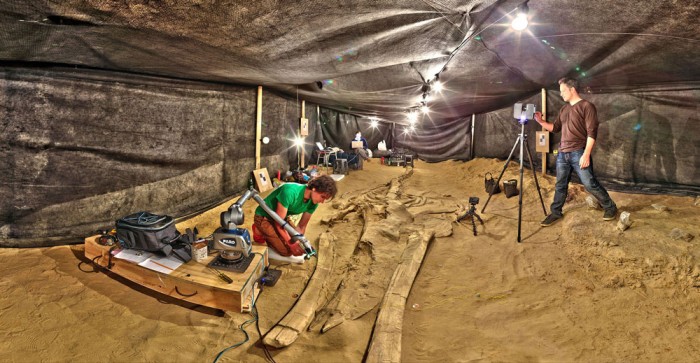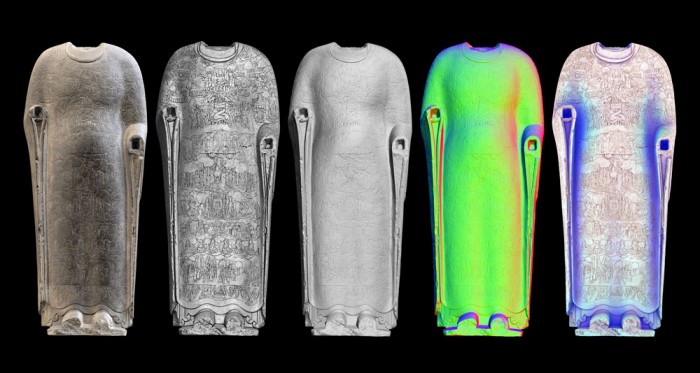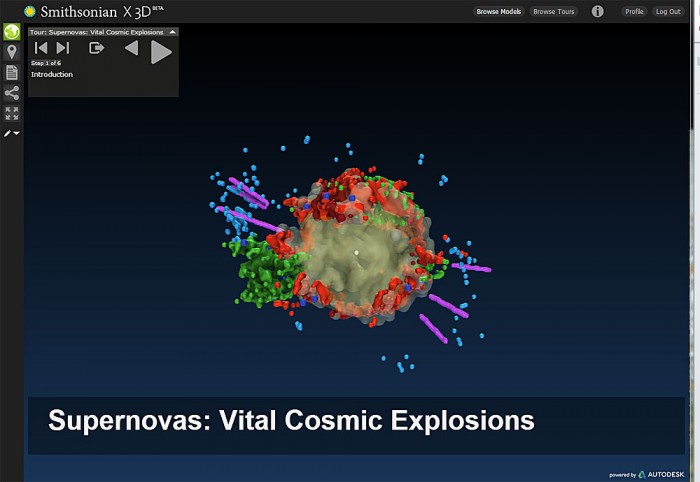How do you bring 137 million objects to life?
As the Smithsonian continues to digitize our vast resources, we have unveiled an exciting new way to really get up close and personal with the objects in our premier Smithsonian X 3D collection.
November 13, 2013 The Smithsonian today unveiled the premier Smithsonian X 3D Collection and state-of-the-art 3-D explorer, kicking off the two-day X 3D Conference focused on the current state of the Institution’s 3-D program. Although all seats are filled for this conference, it will be webcast live from 10:00 a.m. to 5:00 p.m. Nov,. 13 and 14. (an archived webcast will be avaialble after the program.)
The Smithsonian X 3D Collection features objects from the Smithsonian that highlight different applications of 3-D capture and printing, as well as digital delivery methods for 3-D data in research, education and conservation. Among the objects in the collections are:

The world’s first airplane was built by Wilbur and Orville Wright and flown for the first time in Kitty Hawk, N.C. on Dec. 17, 1903. In addition to making those historic first flights, the Wright Flyer embodies fundamental elements of all subsequent airplanes.
The Wright Flyer (National Air and Space Museum): The 3-D scan of the Wright Flyer allows users to explore the fine details of the artifact, providing a window into the Wright’s inventive genius and understanding of the principles of flight.
Cassiopeia A Supernova Remnant (Smithsonian Astrophysical Observatory): This multi-wavelength 3-D reconstruction of Cassiopeia A uses X-ray data from NASA’s Chandra X-ray Observatory, infrared data from NASA’s Spitzer Space Telescope and optical data from NOAO’s 4-meter telescope at Kitt Peak and the Michigan-Dartmouth-MIT 2.4-meter telescope.

This specimen comes from Cerro Ballena, a paleontological site in Chile with a spectacular collection of fossil marine mammals unearthed during construction on the Pan American Highway.
Fossil Whale (National Museum of Natural History): Smithsonian paleontologists and 3-D staff conducted a time-sensitive documentation of the skeletons from the site (Chile) and captured essential data about the arrangement and condition of the skeletons before they were removed and the site was paved over.

This life-size limestone figure is covered in low-relief etchings of narrative scenes, providing a rare glimpse into early Chinese vision of the Buddhist cosmos, as portrayed in a symbolic map of the universe. Traces of pigment on the surface suggest that the dense design was originally painted, making the scenes easier to read.
Cosmic Buddha (Freer and Sackler Galleries): To study such low-relief compositions, scholars have traditionally made rubbings with black ink on white paper, which give stronger contrast to the outlines. 3-D scanning, used with a wide variety of imaging techniques, can give even more clarity to the designs.
To view these and other objects scanned using 3-D technology, the Smithsonian and San Francisco-based Autodesk created the Smithsonian X 3D explorer. The explorer contains a variety of tools for examining these objects. Users will be able to rotate the objects, take accurate measurements between points and adjust color and lighting. The explorer also has a storytelling feature, which allows Smithsonian curators and educators to create guided tours of the models. The explorer is also embeddable on non-Smithsonian websites, blogs and social media.
“The Smithsonian is a leader in using 3-D technology to make museum collections and scientific specimens more widely available for anyone to use and study,” said Günter Waibel, the director of the Digitization Program Office. “The Smithsonian X 3D explorer and the initial objects we scanned are the first step in showing how this technology will transform the work of the Smithsonian and other museums and research institutions.”
In addition to being able to view these objects using the explorer, the raw 3-D data from the objects will be made available for downloading for personal and noncommercial use. Teachers and other educators can use the data to create 3-D models of these objects for use in their classrooms.
“The Smithsonian is a leader in using 3-D technology to make museum collections and scientific specimens more widely available for anyone to use and study,” said Günter Waibel, the director of the Digitization Program Office. “The Smithsonian X 3D explorer and the initial objects we scanned are the first step in showing how this technology will transform the work of the Smithsonian and other museums and research institutions.”
Additional support for the Smithsonian’s 3-D efforts has been provided by 3D Systems. The company worked with the Smithsonian to scan, design and print objects from several Smithsonian museums, including one of the large fossilized whales found in Chile’s Atacama Desert.
Smithsonian staff are invited to stop by the Technology Gallery in the Smithsonian Castle Commons for a first-hand look at 3D capture and print technologies, including 3D printers and prints, virtual reality goggles and natural user interface (NUI) devices. This will be an opportunity to speak with representatives from other cultural heritage organizations and universities to learn how they are using 3D content with the latest 3D viewing platforms for visualizing and manipulating 3D data.
Technology Gallery Hours:
Wednesday, Nov.13, 9:30 a.m. to 5:00 p.m.
Thursday, Nov. 14, 9:00 a.m. to 2:00 p.m.
Posted: 13 November 2013
-
Categories:
Collaboration , Education, Access & Outreach , Feature Stories , News & Announcements , Science and Nature





[…] Learn more about the Smithsonian’s 3D digitization efforts. […]